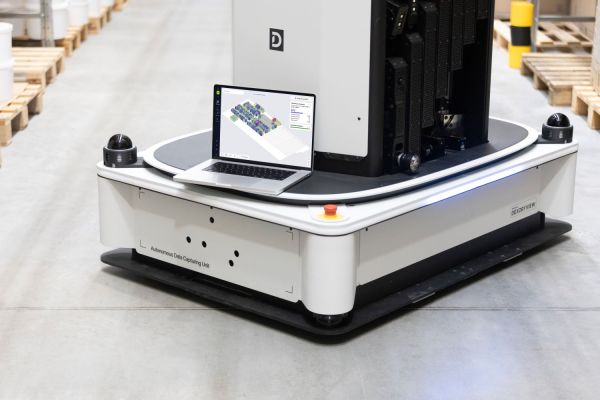He wore his uniform with tools hanging from his belt and his ID around his neck. He knocked on the door and, after a few seconds, he was greeted by Marta, a friendly but curious lady. Juan smiled and, in a professional tone, explained that he had come to install the internet service he had requested.
‘Where would you like us to place the router?’ asked Juan, as Marta led him into the living room.
Before starting, John did an inspection of the inside and outside of the house. He noticed that the fibre distribution box (the CTO) was on a pole about 20 metres from the house. He also noted that the location where Martha wanted the modem was far from the main entrance, which would require some adjustments to the cable routing.
‘I’m going to need to run the fibre through here and drill through this wall, is that OK?’ he explained. Martha confirmed ‘ok’ to do the job and John began to prepare his tools.
He pulled out his ladder and a roll of fibre optic cable and his optical meter. Wearing gloves and a hard hat, he climbed the pole to connect the cable to the CTO. It was no easy task: the branches of a tree made access difficult, but with patience and some creativity he managed to get around the obstacle.
Back on the ground, he laid the cable towards Marta’s house, securing the fibre with staples to prevent it from coming loose. Once inside, he carefully drilled into the wall to run the cable to the chosen location. Throughout the process, he explained to Marta what he was doing, making sure she understood each step.
With the fibre installed at the customer, he installed the modem and began the corresponding configurations and tests. With his optical meter he checked that the signal was within the correct parameters. There was a tense moment when he noticed a slight loss of signal, but after checking the connections he solved the problem.
‘Ready, Marta. The internet is working,’ he finally said. He took out his mobile device and showed her how to connect to the Wi-Fi networks, then measured the speed at which she was surfing and tested the phone line by making a call. He also gave her useful tips: how to change the password and what to do if she had any problems in the future.
Marta was delighted. ‘This is going to change my life,’ she said with a laugh. John asked her to check if everything was working properly.
Before leaving, he cleaned up the work area and left everything in order. He closed the service order in his system, making sure to attach photos of the installation and complete the required records.
As he put away his tools, he thought about the challenges of the day: the tree branches, the limited space to run the cable, but most of all, the satisfaction of having taken care of everything and leaving Marta with impeccable service.
When he said goodbye, Marta not only thanked him, but also commented: ‘It’s good to know that there are still people who do their job with such dedication’.
Juan got into his truck, ready for the next challenge. For him, every installation was a new opportunity to learn, solve problems and connect people to the digital world.
How does a fibre optic installation technician work at the customer’s home?
The work of a fibre optic installation technician is crucial to ensure that the service contracted by the customer works properly. This role involves technical skills, problem-solving abilities and excellent interpersonal skills. Here is a step-by-step explanation of their job, the challenges they face and the skills needed to do it.
Arrival at home and introduction
The technician arrives at the home following the address provided in the service order. Before entering:
- Identification: Introduces him/herself to the client with his/her name and visible identification.
- Initial explanation: Briefly describes the work to be done and confirms key points with the customer, such as where the service will be installed.
- Initial survey: Assesses access to the installation site to identify potential obstacles, such as thick walls, trees, electrical hazards, distance from the CTO to the customer’s home or road crossings.
Preparation of tools and materials
The technician verifies that he has everything necessary, including:
- Tools such as drills, screwdrivers, ladder and power meter.
- Materials such as fibre optic cables, connectors, ONT (Optical Network Terminal), decoders and repeaters.
- Fibre kit.
- Personal protective equipment (PPE) such as helmet, safety cones, gloves and harness.
Fibre optic installation
The installation process includes the following steps:
- Laying the cable: connects the fibre from the CTO (located on a nearby pole or building) to the home. Sometimes you have to deal with difficulties such as:
- Physical obstacles (trees, buildings).
- Lack of space in pre-existing ducts.
- Electrical risk
- Internal connection: Bring the fibre to the agreed location inside the home. This may involve drilling holes in walls or running the cable through existing ducts.
- Equipment installation: Place and configure the ONT or router so that the customer can connect their devices.
Service verification
Once the installation is complete, the technician performs tests to ensure that the service is working properly.
- Connectivity testing: Uses an optical power meter to verify that the signal/power is within the proper parameters.
- Final configuration: Configures the router and ensures that the customer can access the internet.
- Service certification: Verifying the correct operation of the service certifies the service order.
Communication with the customer
Interaction with the customer is an essential aspect of the work.
- Explanation of the use of the service: The technician explains how the contracted service works, what to do in case of minor failures and how to contact technical support.
- Resolving doubts: Answers questions about the installation and use of the equipment.
- Professional attitude: It is crucial to maintain a courteous and empathetic attitude, especially if there are setbacks during the installation.
Completion of the work
The technician closes the visit with the following steps:
- Customer confirmation: Asks the customer to verify and confirm that the service is operational.
- Closing the service order: Records the installation as completed in the system, attaching photos or necessary documentation.
- Area clean-up: Ensures that the job site is left clean and tidy.
Common job challenges
- Limited accessibility: Some installations require creativity to get cables through complex structures.
- Technical problems: Unexpected network or equipment failures can delay work.
- Customer expectations: Dealing with unsatisfied customers or unrealistic expectations is a constant challenge.
Key competencies of the installation technician
- Technical skills: Proficiency in installation, use of tools and technical troubleshooting.
- Attention to detail: Accuracy in cable routing and equipment configuration.
- Communication: Ability to explain technical concepts in a simple manner and build confidence.
- Teamwork: Coordination with other technicians or supervisors to solve complex problems.
- Time management: Ability to meet scheduled visits without sacrificing quality of work.
The job of the fibre optic installation technician requires not only technical expertise, but also a holistic approach to the customer experience. With every installation, their goal is to ensure that the customer enjoys quality service from the very beginning.












